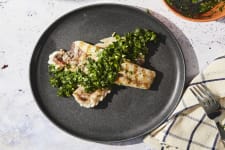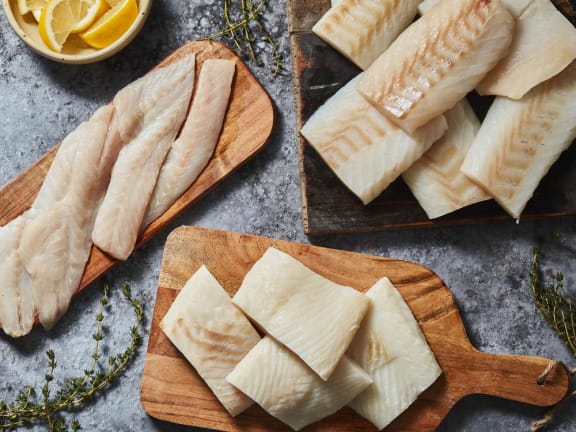
Different Types of White Fish from Alaska
February 23rd, 2024Exploring the Health and Flavor of the Best Alaskan White Fish
What is Alaskan white fish?
From mild and delicate to robust and meaty, Alaskan white fish are a diverse group of fish distinguished by the white color of their flesh. Some species, like Pacific halibut and Pacific cod, are popular outside of Alaska. Other delicious varieties, like rockfish and lingcod, are more well-known within the region.
Each species has its own unique qualities that set it apart from the others. White fish from Alaska also sets itself apart from similar species in the Atlantic, since Alaska offers some of the most sustainable fish you can eat.
What does Alaskan white fish taste like?
While many white fish can be mild in flavor, Alaskan white fish represent a broad range of tastes, from subtle to intense.
For example, rockfish has a very bold flavor profile and can be incredibly flaky while also maintaining a firm texture. In contrast, Pacific cod has a very mild flavor and a pleasantly bouncy bite. Sablefish, with its relatively high fat content, is mild but buttery. No
What are the different types of Alaskan white fish?
There are many different types of white fish in Alaska, but a few of the most popular are Pacific cod, Pacific halibut, rockfish, Wild Alaska Pollock, and sablefish (also known as black cod).
Pacific Halibut

-
Typically between 1 to 8 feet long
-
Weighs between 25 to 30 pounds
-
Mild flavor
-
Firm texture
Wild-caught Pacific halibut is subtle and mild in flavor, but provides a meaty and firm bite when cooked. Its adaptable and delicate flavor profile makes it a perfect blank slate for a range of flavors. Pacific halibut can be harvested from mid-March through mid-November, making it an accessible and sustainably-caught fish that you can buy throughout most of the year.
While every white fish can be cooked using a variety of cooking methods, Pacific halibut is the most versatile due to its especially firm texture.
Pacific Cod
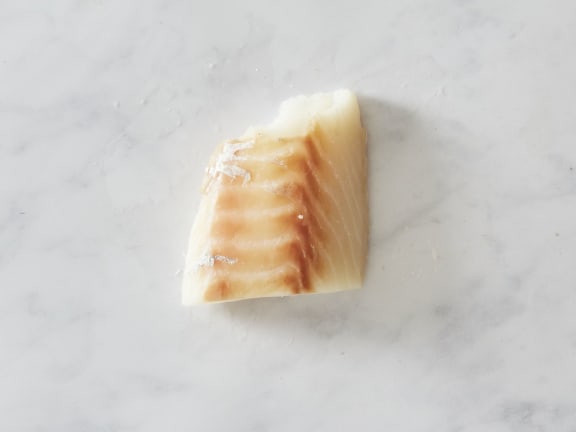
-
Typically between 39 to 55 inches long
-
Weighs between 5 and 10 pounds
-
Mild and sweet flavor
-
Flaky texture
Alaskan cod, also known as Pacific cod, is certainly a go-to white fish in a variety of recipes, ranging from fish and chips to hearty baked dishes. Its popularity is partly due to its mild, subtly sweet flavor and flaky texture.
In Alaska, this white fish is sustainably harvested year-round, making it one of the most accessible white fish varieties. Pacific cod populations are healthy and abundant. This is in contrast to Atlantic cod, which has historically been overfished up and down the Atlantic coast, though there are some efforts underway to help these populations recover.
Rockfish
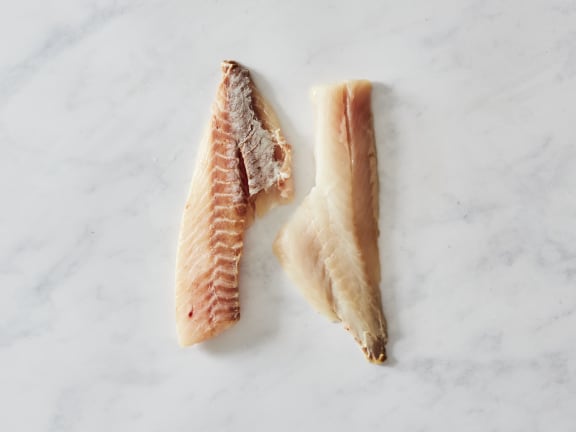
-
Typically between 8 and 40 inches long
-
Weighs between 1 and 12 pounds — weight and size varies greatly between species
-
Bold, sweet, and nutty flavor
-
Flaky texture
Like many other white fish, rockfish is lean. However, what sets it apart is its bold flavor profile. It has a sweet, nutty flavor that pairs beautifully with rich and dynamic preparations, like a spicy coconut curry, buttery pan-seared crusts, or vinegar based marinades.
Rockish is itself not a species of fish, but a family of fish. However, the name “rockfish” commonly refers to one of several species of white fish within this family. There are more than 70 types of rockfish that are able to be sustainably harvested year-round. As a group, rockfish is the most common near-shore white fish available on North America’s West Coast.
Wild Alaska Pollock
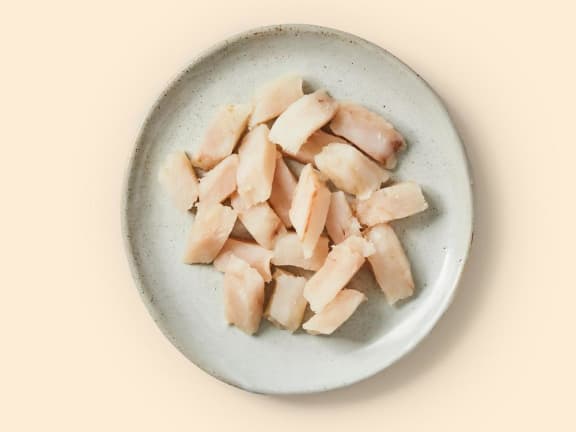
-
Typically between 12 and 20 inches long
-
Weighs between 1 and 3 pounds
-
Mildest flavor
-
Light and flaky texture
Wild Alaska Pollock has wide appeal. It’s incredibly mild in flavor, and is very adaptable to sauces, marinades, spices, and stews. This type of white fish is firm like Pacific cod, but less dense than Pacific halibut, making its texture light and flaky. Wild Alaska Pollock can be sustainably harvested from mid-March through December.
Nutritionally, this species is low in calories, low in fat, and has a modest amount of essential nutrients. It’s also very low in mercury which means this is one of the healthiest types of white fish to use in your regular diet.
Lingcod
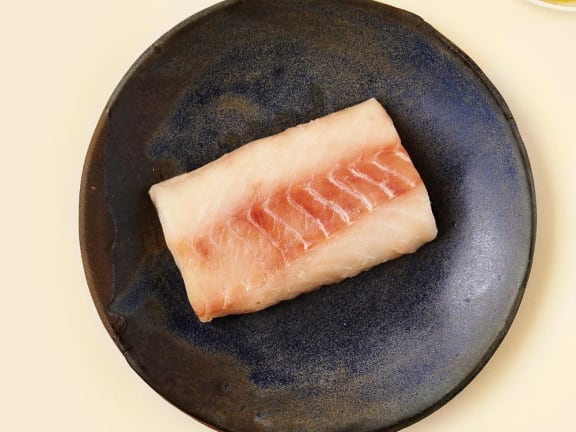
-
Typically between 24 to 60 inches long
-
Weighs between 10 to 20 pounds, but larger individuals can weigh up to 70 pounds
-
Mild and versatile flavor
-
Flaky texture
Lingcod is a unique species of Pacific white fish that is less well-known than other wild Alaskan species, but definitely worth your culinary attention. It’s a relatively large species of ground fish that yields firm, flaky, and mildly flavored fillets that pair well with any rich, savory flavoring. Contrary to its name, lingcod is not cod, but a type of greenling. And, even more contrarily, some lingcod can even produce vividly blue fillets!
Between the different types of white fish, lingcod is most similar to Pacific cod and Pacific halibut. Compared to halibut, lingcod is much firmer but also lighter in texture. When it comes to flavor, lingcod and Pacific cod are surprisingly very similar in their mildness and versatility. This white fish is a great lean source of protein that has a good amount of essential nutrients, like potassium and vitamin D. Lingcod can be sustainably harvested between mid-May through December.
Yelloweye Rockfish

-
Typically reaches up to 36 inches
-
Weighs between 15 to 20 pounds
-
Sweet and mild flavor
-
Firm texture
Yelloweye rockfish is another intriguing species fished in Alaskan waters. True to its name, this type of rockfish boasts bright yellow eyes and a bright orange or red body. It’s often found in rocky areas and can live past 100 years. Due to its long lifespan and slow reproductive rate, sourcing this white fish species from sustainable Alaskan fisheries is crucial.
This firm-textured fish offers a mild, sweet flavor that is quite similar in delicate taste and texture to lingcod and Pacific cod. When cooked perfectly, this prized white fish has a deliciously shreddable bite, perfect as a substitute for any dish you would use lingcod, Pacific cod, or even Pacific halibut in. Yelloweye is a low-fat white fish option that has a healthy amount of protein, calcium, and potassium.
Sablefish
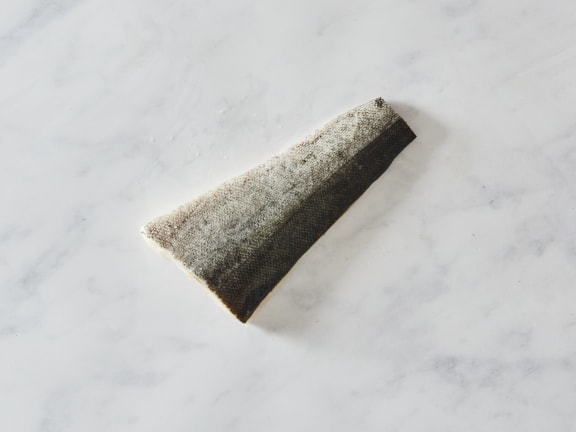
-
Typically between 2 to 3 feet long
-
Weighs between 5 to 10 pounds, but can weigh up to 25 pounds
-
Rich, buttery flavor
-
Incredibly flaky texture
Sablefish, also known as black cod or “butterfish,” is a decadent white fish famed for its sensational buttery flavor. These fish are larger in size and have a higher oil content — but that only enhances its flavor. Comparably, it is similar in its mildness to Pacific cod, but its buttery goodness is very unique.
This white fish is incredibly versatile in the kitchen, pairing best with both bold and subtle flavors. Due to its higher fat content, using less oil and pairing your sablefish with low fat sides is often recommended for both your health and balance on your plate. Sablefish has a richness of flavor that makes it truly stand out amongst other white fish, landing it a spot as the highest valued finfish in Alaska. It can be sustainably harvested from mid-March through December.
Buying and Storing Alaskan White Fish
White fish from Wild Alaskan Company is always flash frozen quickly after being caught. This preserves the fish at the peak of freshness. When storing your frozen wild white fish, be sure to keep it frozen until the day you are ready to defrost and cook it, as this will maintain that same level of quality.
Be sure to stock your kitchen with sustainably-caught white fish by sourcing your seafood online from Wild Alaskan Company. You’ll get high-quality, wild-caught seafood delivered straight to your doorstep. Choose your seafood box today.
